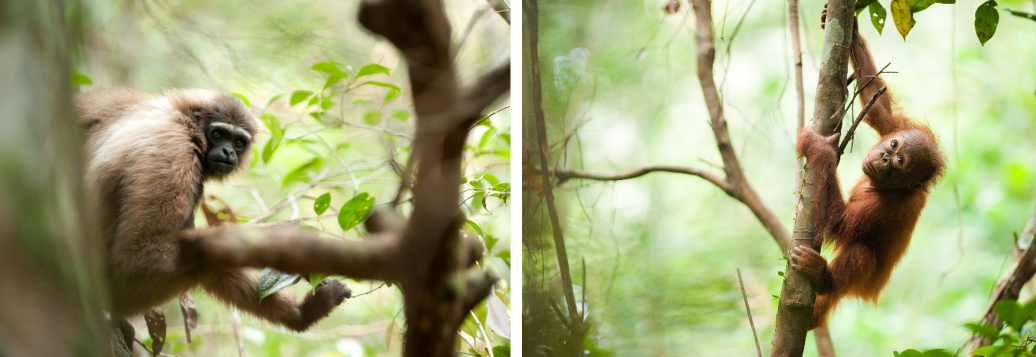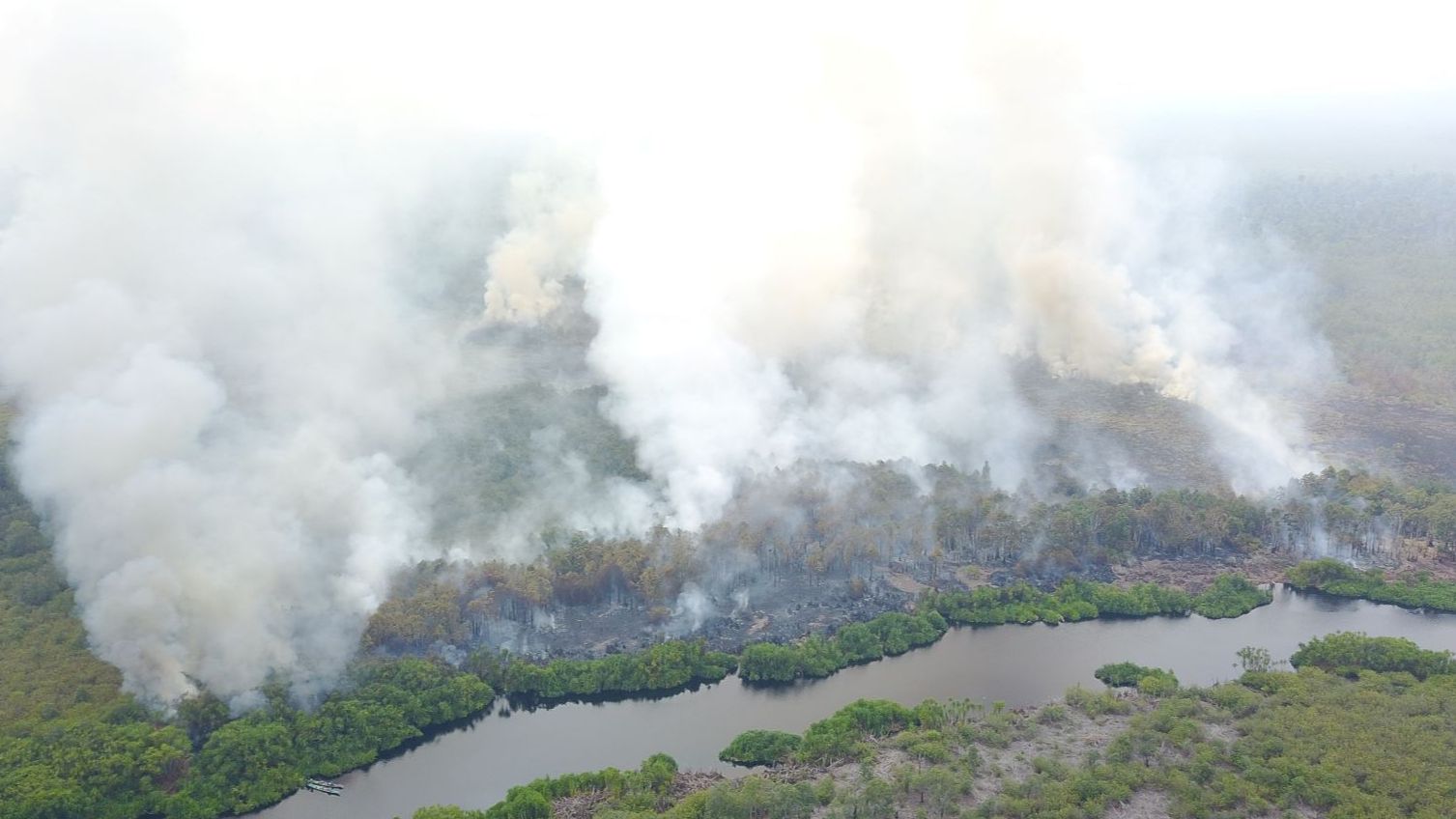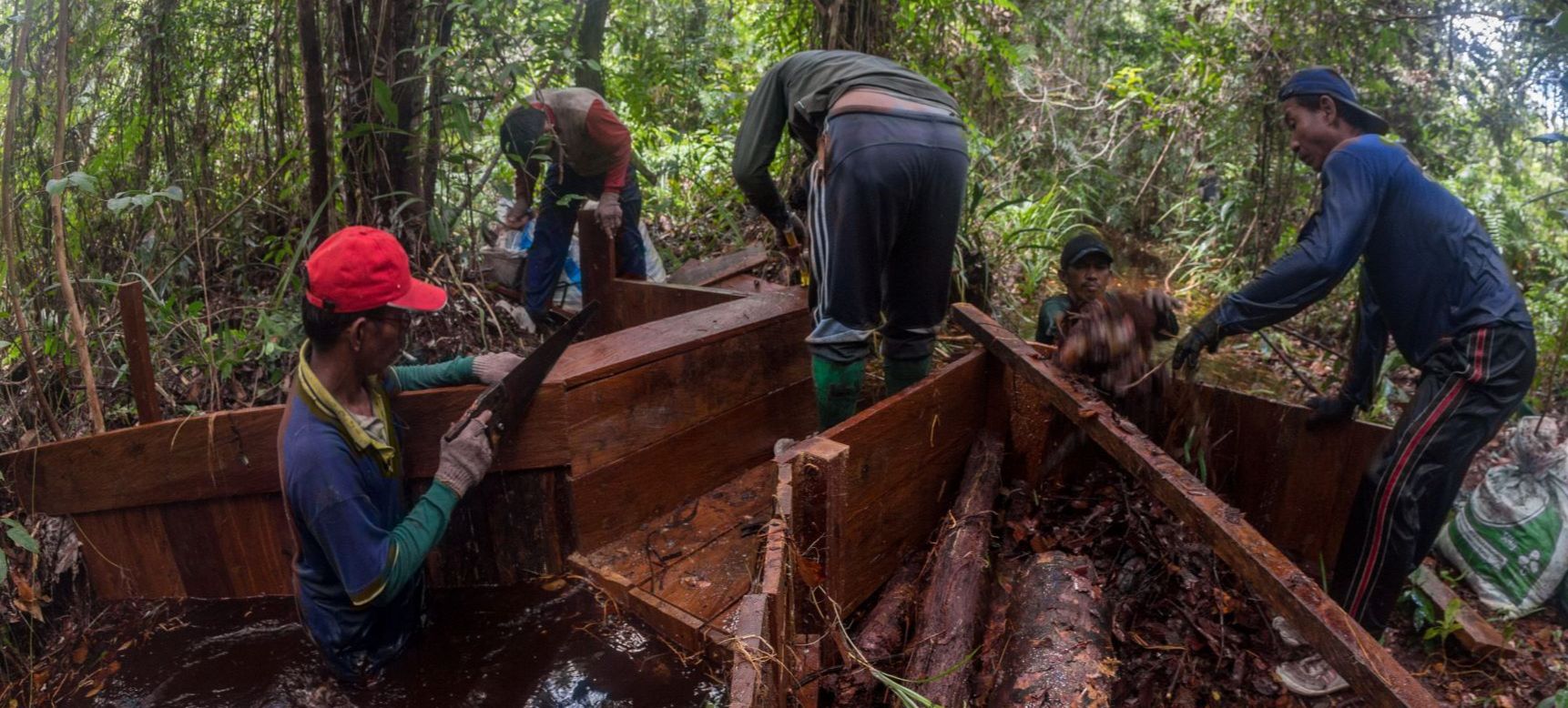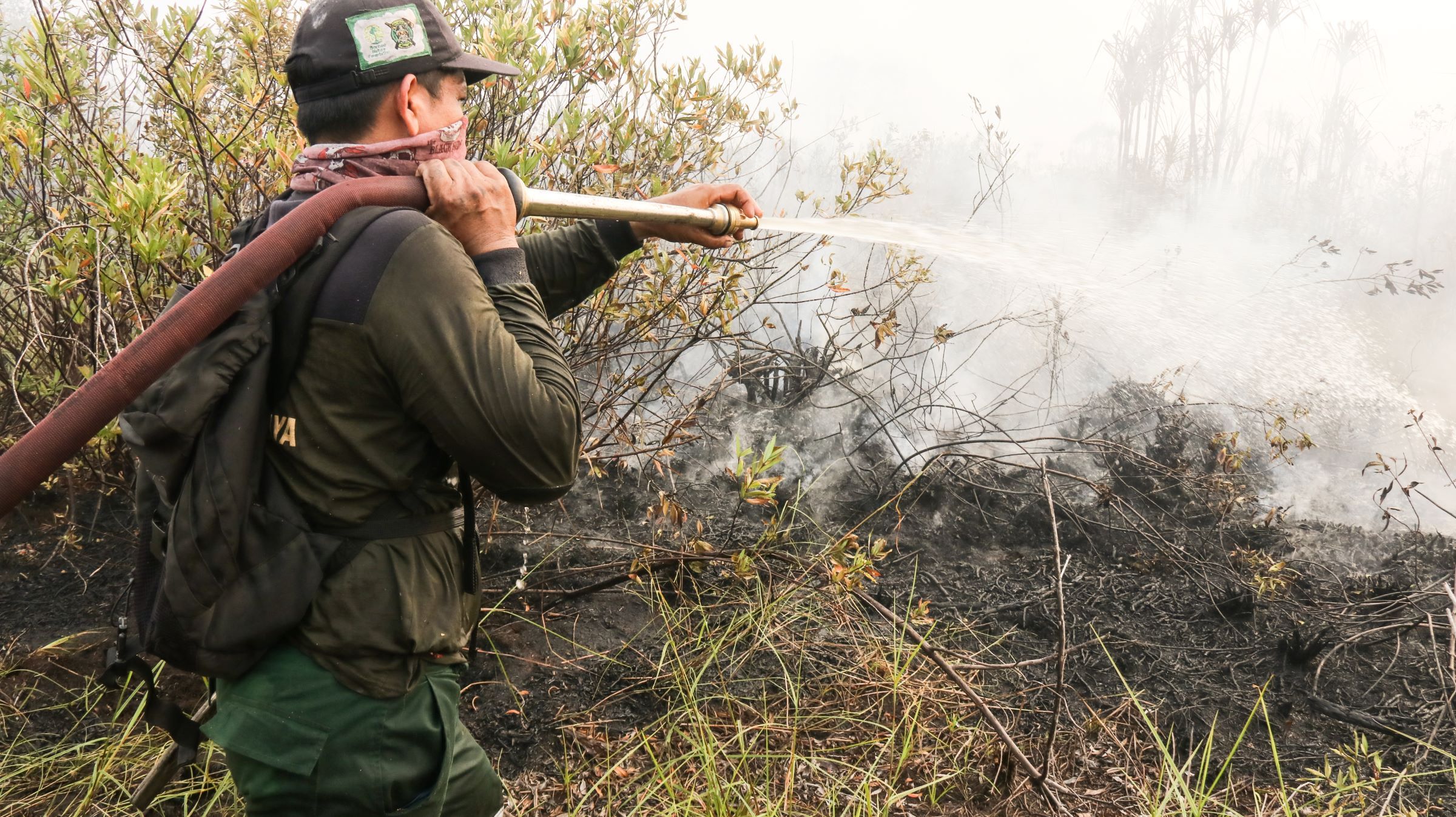Biodiversity hotspot Borneo
Borneo, the third largest island in the world, is home to up to 15,000 plant species, including 3,000 tree species and more than 2,000 orchid species. Over 200 mammals, 400 amphibian and reptile species and 600 bird species as well as numerous insect species also inhabit Borneo's rainforests. Many of these species can only be found here.
But Borneo's biodiversity hotspot is in danger: once almost completely covered by forest, around half of Borneo's forest has disappeared since the middle of the 19th century and the forest loss continues. The main cause of deforestation is the conversion of rainforest areas into industrial palm oil, timber and pulp plantations. In addition, the mining of gold and other minerals, (illegal) logging, forest fires and the expansion of infrastructure also play their part.
Unregulated land management, weak enforcement of the law by the state, poverty and socio-economic insecurity increase the pressure on forests.

Project area
The two rivers, Katingan and Kahayan in Central Kalimantan Borneo, rise in the mountainous heart of the Barito Ulu region of Borneo, flow through the species-rich lowland forests of the Rungan River basin before widening and flooding the vast Sebangau peatlands. Both the Rungan and Sebangau landscapes play an important role in the conservation of endangered species such as the orangutan, Bornean gibbon, maroon langur and rhinoceros hornbill.
The entire forest area has an important social and economic function for the local communities. The numerous rivers and tributaries are home to an abundance of fish species that serve as a livelihood for the surrounding villages. The indigenous Dayak people, the Javanese who were settled through a government program and the settlers of the now defunct timber industry depend on the diverse services provided by the rainforest.
Devastating forest fires
Severe forest fires occur regularly on Borneo. The fires are almost always the work of people who aim to turn evergreen rainforest into plantations or prepare for other forms of land use by slash-and-burn.
The fires and the toxic smoke pose a great danger to the people in the project area. The forest fires also threaten biodiversity and further fuel climate change. That is why we want to work with our local partner organization to prevent forest fires, fight fires at an early stage and counteract the consequences of the fires with reforestation measures.

Dams against the drainage of the swamp rainforests
The Sebangau National Park, which covers around 600,000 hectares, is criss-crossed by a network of illegally constructed canals that were once used to transport felled timber. These canals still drain the swamp rainforest, which has since been placed under protection. As a result, the groundwater level gradually sinks and the peat soil dries out. This causes the vegetation to die. At the same time, the risk of fire is increasing dramatically.
Together with our local partner organization, we are working on damming the canals that have already been mapped. This will re-wet the forest and restore the peat soils as an important carbon store and the swamp rainforest as a unique habitat for endangered species. In addition, the forest is better protected from forest fires as a result of the rewetting and is less accessible for timber harvesting thanks to the dams.

Equip and train firefighting teams
Our partner organization has set up municipal fire-fighting teams. During the dry season, the teams are on high alert. They use so-called thermal drones to search for fires, as it is crucial that the fires are detected and extinguished as quickly as possible.
In collaboration with our partner organization, nine existing and two new firefighting teams are to be equipped with protective equipment and thermal drones and trained to fight forest fires.

Education, awareness-raising and knowledge transfer
Through education and awareness-raising measures, the local population recognizes the benefits of conservation measures. This awareness motivates people to get involved in preserving the forest. The youngest generation in particular should be sensitized to the environment and empowered to work for a future worth living.
For this reason, children in the project region are taught about nature in weekly lessons. They are also given the opportunity to take part in excursions and implement their own small nature conservation projects.
In addition, interested communities are advised on how they can manage their land sustainably. At least 27 communities will be trained in sustanibale farming methods such as fish farming, permaculture or beekeeping . A prior consultation will show which type of self-sufficiency makes the most sense for the village. They will be accompanied by employees from our partner organization during implementation.
Establishment of tree nurseries and reforestation
The reforestation project enables communities to actively participate in the restoration of habitat that has been destroyed by previous fires or other human activities. Interested communities are trained to establish and maintain community tree nurseries and are provided with the necessary equipment. As soon as the seedlings are big enough to plant, our partner organization buys them and plants them on degraded areas.
In the current year, at least five communities will be trained in setting up their own tree nurseries and 1,000 seedlings will be planted.










